Maynard Dixon, noted illustrator and painter of the early 20th century, best known for his Western landscapes and Native imagery was an ardent fan of capturing his environment with pencil and paper. He began drawing images of his boyhood home of Fresno California in the San Joaquin Valley at an early age.
One of his earliest drawings dates from 1890 was of his grandmother titled “ A Portrait from Life” he sent this drawing along with others to the renounced illustrator and painter of western frontier Fredric Remington. Amazingly Remington wrote back to the young Dixon encouraging him to continue down the road to becoming an artist.
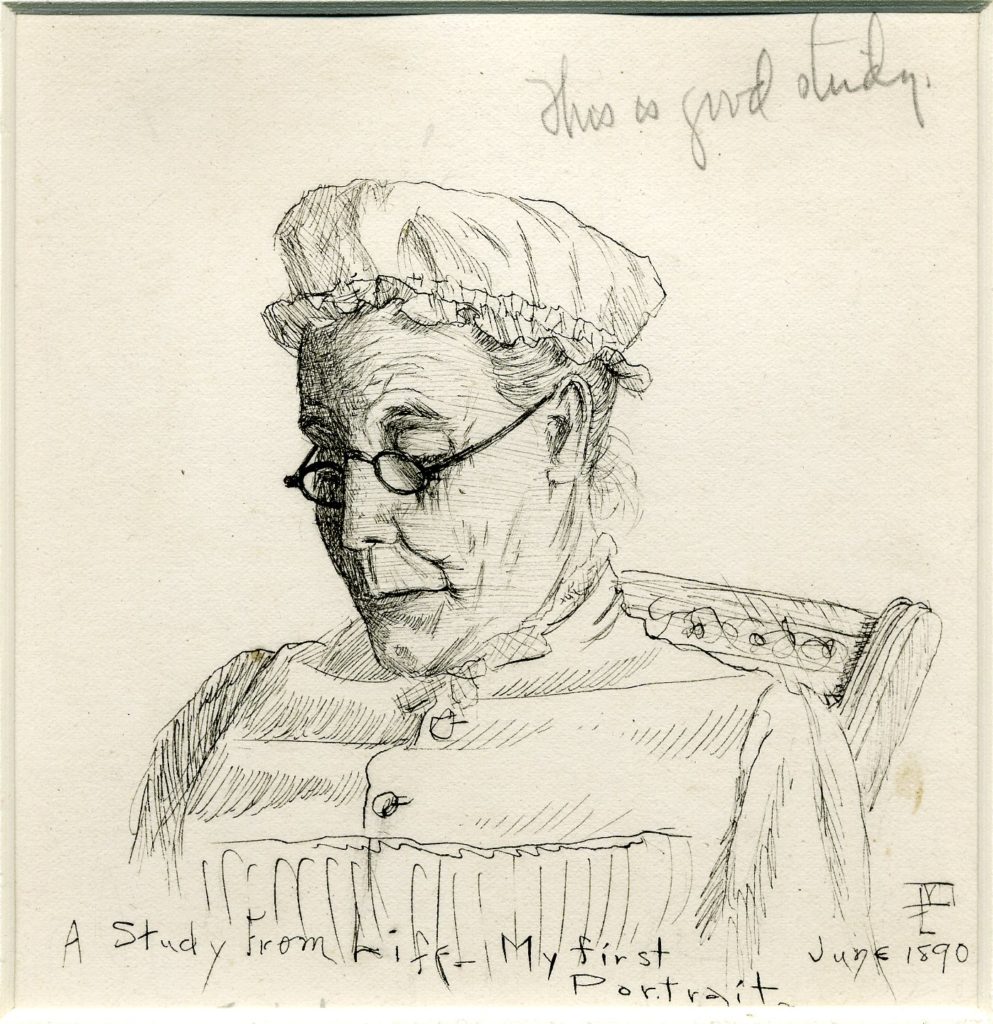
Remington letter dated September 3, 1891 reads:
“…your letters and books are here and I have quite enjoyed your sketches. I hardly know what to tell you—I do not teach and unused to giving advice—the only advice I would give you is to never take anyone’s advice, which is my rule.
“You draw better at your age than I did at the same age—if you have the ‘Sand’ to overcome difficulties you could be an artist in time—no one’s opinion of what you can do is of any consequence—time and your character will develop that.
“Most every artist needs ‘schooling.’ I had very little—it is not absolutely necessary—it is best to have it. Be always true to yourself—to the way and the things you see in nature—if you imitate any other man ever so little you are ‘gone.’
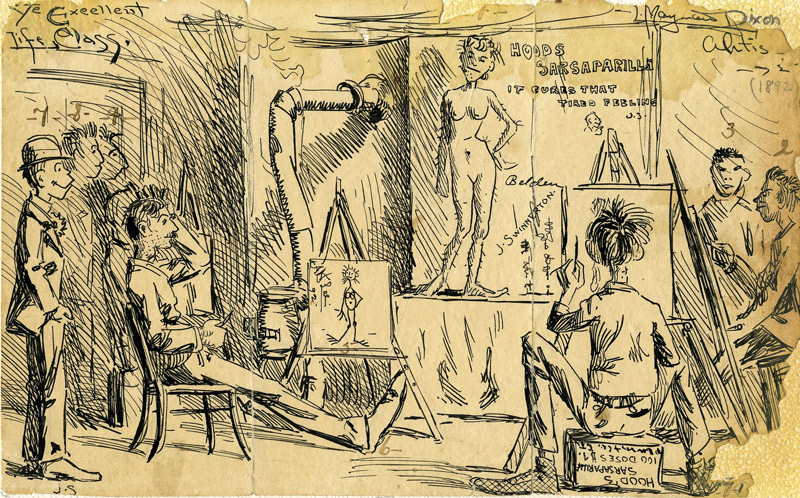 Dixon is accepted to the California School of Design and in 1892 draws “Ye Excellent Life Class” the piece is signed and dated using an early Dixon signature. Other early drawing using the L. Maynard Dixon Signature include Rebecca working at a sewing machine done in 1893,titled “Reb sewing” and a study of horses also executed in 1893 utilize Dixon’s early signature.
Dixon is accepted to the California School of Design and in 1892 draws “Ye Excellent Life Class” the piece is signed and dated using an early Dixon signature. Other early drawing using the L. Maynard Dixon Signature include Rebecca working at a sewing machine done in 1893,titled “Reb sewing” and a study of horses also executed in 1893 utilize Dixon’s early signature.
Even in these early drawings of an eighteen year old Maynard Dixon, it is clear he has superior abilities when it comes to drawing.
Dixon drops the initial L (for Lafayette, his maternal grandfather’s name) by the turn of the century and gravitates to Maynard Dixon in block letters and script, or the initials M. D. in the lower right or left corner of his work. Dixon would use the M.D. initials regularly, even on significant oil paintings. His new trademark is a red thunderbird insignia, which he often adds to drawings and paintings.
Dixon’s formal training is short-lived. He finds the California School of Design’s academic environment under the artist Arthur Frank Mathew—a teacher who believes France to be the center of the art world—not to his liking.
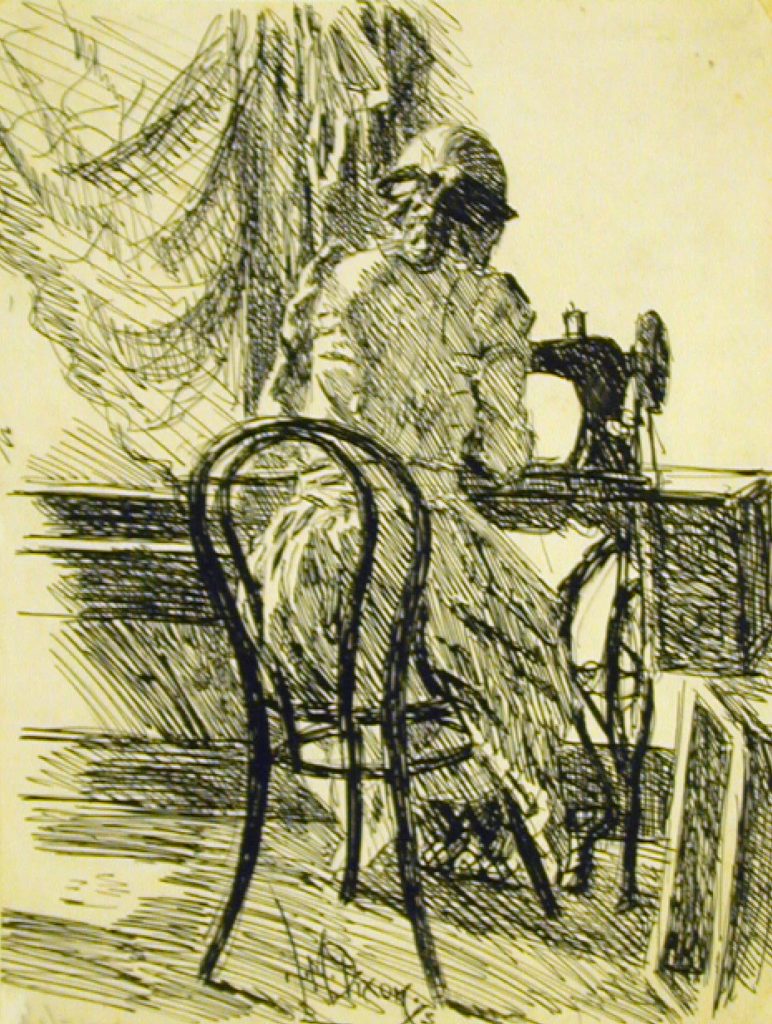 Dixon writes about his experience under Mathew’s tutelage:
Dixon writes about his experience under Mathew’s tutelage:
“I was just a timid country kid, maybe I expected too much—for I was used to sketching things outdoors. I was too easily disheartened by the favoritism and sarcastic criticisms of Mathews. He had me too scared to know what he was talking about.”
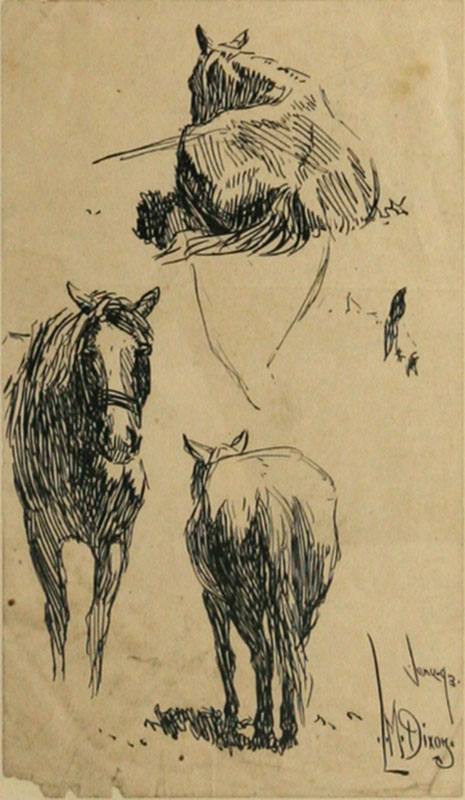 The young Dixon lasts three months at the school before taking Remington’s words to heart and deciding to create his own path, drawing from nature instead of following the dictates of the stuffy academic world.
The young Dixon lasts three months at the school before taking Remington’s words to heart and deciding to create his own path, drawing from nature instead of following the dictates of the stuffy academic world.
Dixon quits school even in the wake of the world wide depression of 1893, it doesn’t take long for the ambitious Dixon to find work at the “Overland Monthly”. By 1895 Dixon is being compared to his mentor Frederic Remington. The Monthly writes:
“The readers of the Overland are familiar with the work of Maynard Dixon, perhaps the coming rival of Frederic Remington. His hands are stuffed into his pockets; there is the usual quizzical expression on his face as he walks loose jointedly across the plaza and into my view. He has made a national reputation by his designs for posters and cover designs.”
Dixon continues to use drawing as his medium of choice when it comes to documenting his world. Often simple scraps of paper they represent mental reminders of the moment, an incongruity considering he is married to one of the most significant photographers of the 20th century Dorothea Lange.
Maynard Dixon drawings once plentiful in the 1980’s and early 90’s have become much more difficult to obtain and their prices continue to rise, especially for those drawings from particularly vital times of Dixon’s career or of those studies for important paintings.
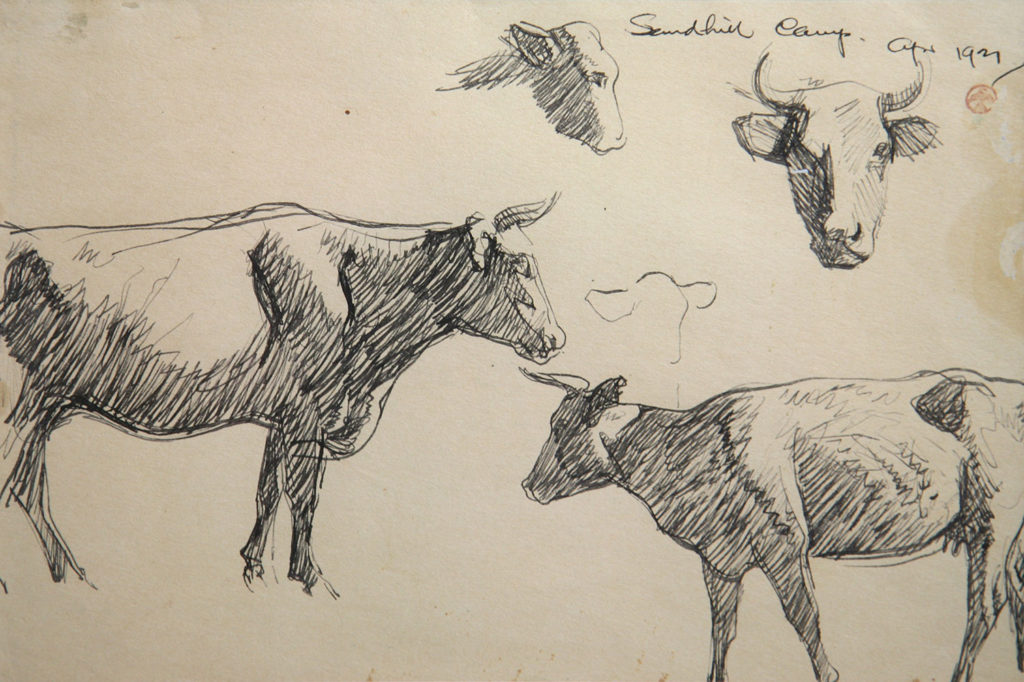 While most drawings are signed with either Dixon’s full name, initials or the thunderbird estate stamp by his third wife Edith Hamlin, some only have his notations. Drawings that have Dixon’s verified handwriting are also considered signed by the artist. However there are some drawings that are not signed or have any Dixon writing, these drawings must be authenticated by an expert in the field to be considered a legitimate Maynard Dixon work of art.
While most drawings are signed with either Dixon’s full name, initials or the thunderbird estate stamp by his third wife Edith Hamlin, some only have his notations. Drawings that have Dixon’s verified handwriting are also considered signed by the artist. However there are some drawings that are not signed or have any Dixon writing, these drawings must be authenticated by an expert in the field to be considered a legitimate Maynard Dixon work of art.
As the prices of Dixon drawings have increased so have forgeries. The most critical component of determining authenticity is not the signature but the drawing itself, which should had the Dixon aesthetic, documentation and correct dating for the piece.
Any legitimate art dealer should be willing to give you a guarantee of authenticity before purchase and if your buying a Maynard Dixon at auction make sure you do your homework before buying as it is up to the buyer to make sure if your buying something signed MD or Maynard Dixon it truly is a piece of artwork by Dixon.
Permission to reproduce photos and paintings in this online catalog secured by J. Mark Sublette. All rights reserved. No portion of this online catalog may be reproduced in any manner whatsoever without written permission from J. Mark Sublette, Medicine Man Gallery, Inc.